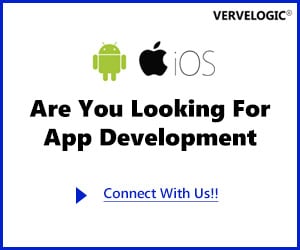What is Mobile App Hosting & Where to Find the Best Provider

Hosting mobile applications over some specific platform helps the client to target a particular type of user. As a leading company, there might be some questions in your head like How to host a mobile application and on what server? How much does it cost to host it and do I really need hosting for my mobile app? But you do not have to worry as this article will help you with everything about mobile app hosting. Let us dive deep into the subject.
What Does it Mean to Host a Mobile App?
The mobile application is the final product for the user but in reality, there’s a whole universe behind it. With hours of coding, testing, hosting, and a lot more, a top mobile app development company will completely understand what we are trying to say. For instance, with your mobile app development, you need to create a user account and with this formation, you have to store the user’s information somewhere. Which makes the backend database important for your application. However, all this is invisible to the user.
When your application is linked with this database then it makes the data process simpler. That’s what servers are for. A server can be defined as a powerful computer feature that is designed to provide information and software to other computers connected to it over a network. It is capable of handling large workloads and also helps in running more and more applications on different devices. Eventually increases productivity and reduces downtime. You won’t need hosting for a mobile app if you developed a standalone offline game but when you go online database is the need.
Why Talk About App Hosting For Your Mobile Application?
We all know that it is impossible to reach a wide customer base without the mobile application which represents your business. Well, some people might state that they already have a website for their business but we are not living in 2015 anymore, mobile applications are far more superior and crucial in 2021.
Currently, Google Play hosts 3.3 million Android Applications and Apple App Store has 2.2 million iOS applications. So, we guess now we do not have to explain the importance of a mobile application in current times. With the growth in mobile app development, it must also spike the mobile database and hosting services. That is why the mobile backend and hosting have gained importance.
What are the Best Options to Manage Mobile App Backend?
Now that you have an idea of what backed is and why you need it, let us move ahead and discuss how to host a mobile app with all the features in terms of the backend that comes with it. It is because developing the backend of mobile applications is completely different from front-end development and designing. So, you must have a knowledge of database management, network infrastructure including web servers, server-side programming, big data, mobile telecommunications network, modern cryptography to ensure security. Now all of these leads to hosting for app development. All these options lead to hosting for your app development.
You have options for the overall management of mobile app backed and these are as follows:
-> You can code your mobile backend using several tools and templates that many cloud service providers provide. It is not as easy as the earlier option, but you at least have market-leading services that you can rely on. The cloud service provider can help you with hosting your requirements.
-> You can also use a “Mobile Backend as a Service” often also known as MBaaS hosting service. It is one of the best and easiest ways to connect with the audience.
-> From both the above options is for you to code with your entire backend and then find a provider that will host your mobile application. It is a lengthy process and needs certain skills. It also allows you to add choices of customization and have the required expertise in your team.
MBAAS: The Easiest and Best Option for Hosting your Mobile App’s Backend
MBaaS offers the cloud computing “as a service” model, where you can have to hire their service in order to manage your backend. The top MBaaS provider offers some amazing services like:
-> Secure infrastructure and storage
-> Persistent data storage
-> Push Notification
-> Geolocation Services
-> Inclusion of API including social network
-> Analytics
-> Ability to seamlessly navigate several mobile platforms and devices
-> 24X7 Customer Support
-> Ability to leverage a microservices architecture
Comparison of Top MBaaS Provider
There are many MBaaS providers which offer various hosting plans. You just need to find the one which fits your needs and help you host your mobile application. Let us have a look at some of the best MBaaS providers.
1. AWS Amplify
This MBaaS is offered by Amazon where they offer some of the best features that an MBaaS provider must consist of.
-> You can also use AWS Amplify to easily build native and hybrid mobile applications as it also helps you to scale your app.
-> Easy to implement key features like user management, authentication push notifications, etc.
-> Allows you to integrate third-party APIs easily along with a secure store of data.
-> AWS amplify also covers a set of major activities in the mobile app development workflow e.g. testing, version control, and deployment. You can also access its open-source libraries, a CLI, etc.
2. Google Firebase
Next on the list is Google’s firebase. Google stepped into MBaaS services when they acquired Firebase in 2016 as they offer the following services:
-> Easy development of applications with easy built-in features like cloud database, user authentication, storage, and messaging. Firebase also offers testing tools, hosting, and crash reporting features.
-> The Grow category of services helps you analyze user interactions which include indexing, analytics, and dynamic linking along with earn with advertising.
-> The best thing about Google Firebase is very cost-effective and almost free as you pay beyond the threshold.
3. ShashiDo
SashiDo is built on the Parse open source code (Parse was used by many backend developers which were closed in 2017). By using SashiDo you can easily cover the entire gamut of MBaaS, and while they don’t have a free tier.
4. Apple CloudKit
This MBaaS is offered by Apple which makes it perfect for developing iOS applications. However, you can also use it for developing other OS applications too but it does not support any server-side logic, and developers need to run application logic on the client-side. It is also free to use and you have to pay once you cross the threshold for their free tier.
5. Kumolos
If you are a comprehensive app development company then Kumolos is perfect as your MBaaS partner. They have developed a client portal for mobile app development companies which helps companies to easily monitor the development. The best thing about Kumolos is they provide agency consoles that help companies in managing their portfolio.
6. Kinvey
Kinvey is another MBaaS provider which offers a wide range of ranges including hosting and development. In addition to standard MBaaS features, they also provide some ready-made app templates which are very easy to use. Their analytics also makes it easy to build hybrid, native, and IoT apps with their seamless SDK.
Hosting a Backend for Your Mobile Application Using Ready Made Tools: It’s the Middle Option
Let us understand the difference between having an MBaaS provider or coding your backend yourself. Everybody thinks that MBaaS is a nice option for them but there are times when you need higher flexibility.
In this section, I will explain how you can use the Google Cloud service, and build your backend using their ready-made tools. I earlier explained how you can consume Google Firebase services for your backend, now let’s use it as a starting point.
While you can start easily with Firebase and bring your mobile app to life quickly, you may have a more complex requirement. For example, if your app needs to modify synchronized data, you need more customization options.
Firebase and Google App Engine standard climate
The Google App Engine standard climate is a ‘Stage as a Service (PaaS), which can screen, scale, and update the facilitating climate. Likewise, with the Cloud processing PaaS model, you bring your code and information.
For your portable application backend, it implies that you need to code your backend. Peruse more about the App Engine standard climate in its Google Cloud archive store.
Here I suggest that as opposed to coding your versatile backend without any preparation, you expand Firebase. This naturally furnishes you with constant information synchronization. While your application would now be able to change synchronized information, imagine a scenario where you need a more significant level of customization.
Do you need to:
-> Call local parallels or keep in touch with a document framework?
-> Have a determined association with Firebase?
-> Settle on other framework decisions?
Mobile app backend with Firebase and Google App Engine flexible environment
Google App Engine adaptable climate permits you more customization alternatives over the standard climate. It does all that the standard climate can do, notwithstanding, it utilizes Docker compartments.
Since it runs your backend administration inside the holder, you can design it. Peruse more about Docker holders in “WHAT IS A CONTAINER”.
This empowers you to call local doubles, write to record frameworks, or settle on other framework decisions. Discover more about the App Engine adaptable climate in its Google Cloud administrations documentation storehouse.
While you have tweaked more with this progression, imagine a scenario in which you need more customization. Peruse on, to discover how you can deal with consequently producing customer libraries. Your application can utilize them to call the backend straightforwardly.
Google Cloud Endpoints and Google App Engine for your mobile app hosting
Your portable application can settle on direct API decisions, utilizing the customer libraries that the Cloud Endpoints create. You don’t have to compose code to work with correspondence with App Engine. As prior, App Engine being a PaaS handles facilitating, scaling, checking, and so on
This methodology additionally permits you to decrease putting away records on the cell phone since you are moving documents to your Cloud stockpiling. Also, the Cloud informing administration permits pop-up messages. Find out about the Google Cloud Endpoints in its Google Cloud documentation.
In this way, you have altered more, and that is incredible! In any case, you can’t utilize this methodology, and should tweak more, if your application needs to do the accompanying:
-> Mechanized and ongoing information synchronization between cell phones;
-> Backend administrations requiring outsider administrations or custom workers;
-> Associate with frameworks without SSL.
Mobile App Hosting In THE Your Way
We are progressing on a continuum wherein we started with using an MBaaS. We didn’t have decisions to modify, hereafter, we moved to use PaaS like Google App Engine, where we had more customization choices. In case your customization necessities are higher, you need a ‘Do-It-Yourself’ (DIY) approach.
It’s the hardest technique to manage your backend requirements, where you need to manufacture your backend in isolation and find convenient applications working with providers also. It’s a confusing endeavor and if you don’t have the crucial backend improvement, establishment, and security capacities in your gathering, consider getting capable help.
Choose the appropriate technology stack for mobile backend development
You need to pick the correct innovation stack for advancement. There are two principal alternatives here, in particular, crossbreed application improvement, and local application advancement.
Which one would it be advisable for you to pick? Half breed application advancement permits you to make a portable application for both Android and iOS with a solitary codebase. This keeps the advancement costs down, additionally, you need to keep one code base as it were. Present-day half and half application advancement systems like React Native convey close local “client experience” (UX).
All things considered, the key usable word in the above was “close local”, and that has an effect! Local applications offer the best UX since you code them utilizing programming dialects that are explicitly intended for the particular stages. They additionally offer the best execution and security, as I clarified in “What is the best improvement way to deal with ensuring the achievement of your application?”.
Kotlin for local Android advancement: Java has been the pillar of local Android improvement for quite a while, and it needn’t bother with a presentation. In any case, Kotlin has arisen as a famous decision for local Android improvement lately, and I suggest that you use it. Kotlin has lightweight libraries, consequently, you can code profoundly performant applications utilizing it. Local Android designers with Java abilities can without much of a stretch learn it, in addition, Kotlin has fantastic highlights to keep away from regular coding mistakes. Peruse our guide “Kotlin versus Java: Which is the most ideal decision?” to become familiar with it.
Quick for local iOS improvement: Objective-C was the pillar for local iOS advancement prior, be that as it may, Swift has acquired tremendous notoriety as of late. It’s an advanced language with amazing highlights, and you can keep away from basic coding mistakes with it. Your codebase stays sufficiently reasonable, which makes support simpler. Quick empowers you to code superior, versatile applications. Subsequently, we suggest that you use it. I clarified its benefits in “How to move your Objective-C venture to Swift?”.
“REST” (Representational State Transfer) is the accepted norm for API advancement, in this way, I suggest that you make RESTful APIs. Programming interface improvement requires cautious arranging, utilizing the correct instruments, archiving the APIs, facilitating them on a cloud stage, and getting them. Need assistance with API advancement? Our guide “How to assemble RESTful API for your versatile application?” is exactly what you need!
You likewise need to utilize fitting data set answers for API improvement, in this way, I suggest the accompanying:
-> PostgreSQL: It’s a profoundly well-known open-source “Social Database Management System” (RDBMS).
-> MongoDB: If you need to utilize a record information base, at that point a NoSQL database like MongoDB is an astounding decision. It’s profoundly versatile.
Select a mobile app server hosting provider
Amazon EC2: Amazon Elastic Compute Cloud (EC2) is the “Foundation as a Service” (IaaS) offering from AWS. It uses the strong distributed computing abilities of AWS, and its clients can rapidly arrange registering, stockpiling, and systems administration by utilizing different APIs. Amazon EC2 gives a secure and resizable processing limit on the cloud.
Google Compute Engine: This is Google’s ‘Foundation as a Service (IaaS) cloud offering. You can make and run virtual machines. They offer dependable help with great versatility, execution, and an incentive for your cash. You can interface your application to your Compute Engine occasions utilizing REST and RPC conventions. There is awesome documentation, look at the Google Compute Engine archive vault for additional subtleties.
IBM Cloud: Previously known as SoftLayer, IBM Cloud gives you both exposed metal and virtual worker alternatives. IBM Cloud is cutthroat on every one of the key boundaries you can consider, for example, network, information move, transmission capacity, the executives, checking, and client care. Visit the IBM Cloud site for additional subtleties.
Computerized Ocean: Another driving IaaS supplier, you will think that it’s simple to send virtual machines with them. The organization has decent interaction, techniques, and devices (PM&T) for arrangement, scaling, the executives, checking, and security. Check the Digital Ocean site to discover more about them.
Rackspace: A Cloud facilitating supplier, just as an oversaw cloud administrations supplier, they have the ability in all significant cloud stages. Gartner Magic Quadrant remembers them as a pioneer among Public Cloud Infrastructure Managed specialist organizations. Discover more about them on the Rackspace site.
Microsoft Azure permits clients to assemble, test, convey, and deal with their applications through Microsoft-oversaw server farms. It is a mainstream stage, especially with the AI and open source local area.
Additional tools to Consider
Contingent upon your application, you may likewise need to investigate extra devices in the DIY approach, as follows:
-> ‘Content Delivery Network’ (CDN): Will you have numerous downloadable resources in your application, for example, pictures and recordings? You are likely considering putting them away with your cloud supplier.
-> You ought to investigate utilizing a CDN to make downloads simple for your application clients.
-> CDNs help in the fast conveyance of substance since they recreate it across different areas.
-> Incapsula, CDN77, Liquid Web, and Rackspace are acceptable alternatives for you, however, there are more decisions.
-> Peruse more about CDNs and great CDN suppliers in “Rundown of 17 Best CDN Service Providers: Updated Reviews”.
Coordination: If you need numerous workers for your portable application backend, consider a decent arrangement set-up. Since these administrations computerize organization, scaling, and the board of cloud assets across numerous workers, you can improve your efficiency. Kubernetes is a decent alternative. Docker Swarm is another acceptable organization alternative, read more about it in “What is Docker Swarm? A conversation on compartment coordination and likely arrangements”.
I suggest that dissect your necessities cautiously. In the event that ‘Opportunity to market is your need, you are in an ideal situation with an MBaaS to have your Mobile application backend. Then again, on the off chance that you can’t do with customization, consider the center way or the DIY approach I have depicted, nonetheless, get ready to manage greater intricacy.






A very informative blog on mobile app hosting. Waiting for more such blogs.